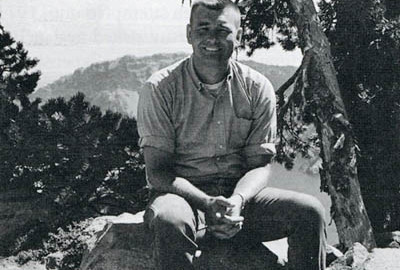Was much of the planning compliance driven?
Yes. Actually, we were in a planning branch. I’m not sure what the hierarchy looked like there, but in any case, we were writing and contracting EISs. I needed to get out and actually do some research but I needed to get in the field more and was sort of office-bound. Although I was doing a lot of contract management and getting in the field, I wasn’t doing my own research and figured I never would. My ambition was to get out of the Corps and into a university as a professor. In order to be a professor I felt that I had to continue to publish. In order to publish I had to do research. I couldn’t continue to publish my thesis because I had exhausted that source of data.
I decided that one idea was to go back to Crater and resume the work that I had done there. There were a lot of unknowns about Crater and I thought I could address some of them. My main research objective initially was to describe the phytoplankton community since that hadn’t been done. There was some very preliminary information. I had measured primary production by phytoplankton but I didn’t do any studies on the species composition, the abundance of phytoplankton in the lake, or their distribution in the water column. Some of that work had been done in 1940 by Utterbach, Phifer and Robinson from the School of Oceanography at the University of Washington. They spent a few days at Crater in 1940 looking at the phytoplankton in the lake but all that work was really sketchy, very basic and preliminary stuff. After that, there had been some work done on phytoplankton by Sovereign, but most of his work done in the late ’50s was on the periphyton (attached algae) in the lake. I don’t think he did any pelagic work. That meant going out on a boat and looking at the pelagic algae and phytoplankton. So I thought here was a great opportunity. I can get a paper out of this and contribute something to the park. I wrote a letter in April, 1978. I sent it to a guy named Sholly (15). I sent it to Sholly and received a reply saying, “yeah, great, come on down. You’re going to have to provide your own equipment. We don’t have any equipment but we’ll provide you with a person to help you out on the lake. That’s about the best we can do, we don’t have any money. You’ll have to pay for this yourself. We have a program called Volunteers in Parks.” I went down in June and started my first field trip. They had a boat for me and it was a two-man rubber raft. There’s a picture of it in this Oregon Historical Quarterly issue (16). They had a rubber raft available and that was it. There was no winch or anything on it. Just the rubber raft with a three horsepower engine and a couple of oars.


